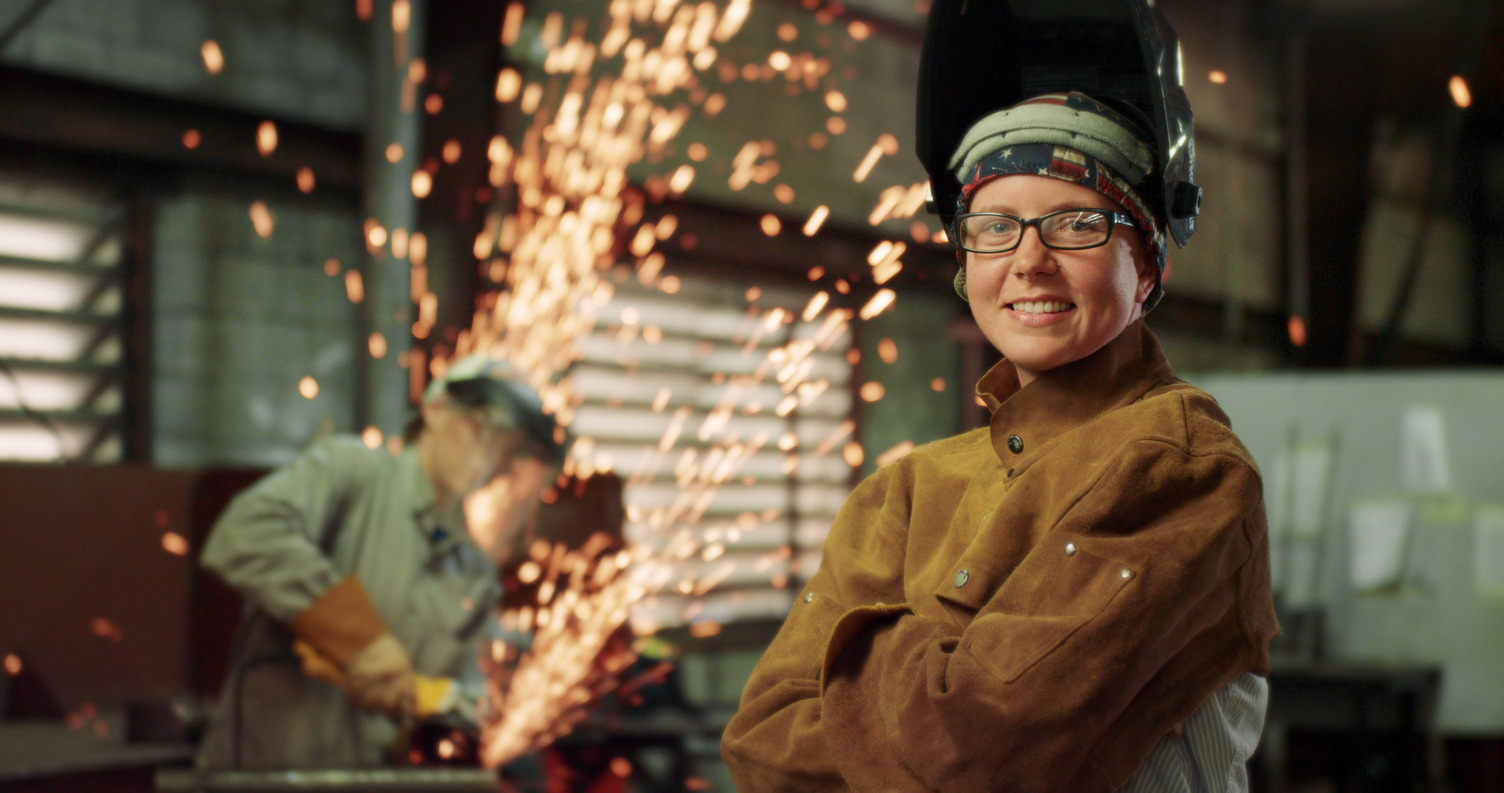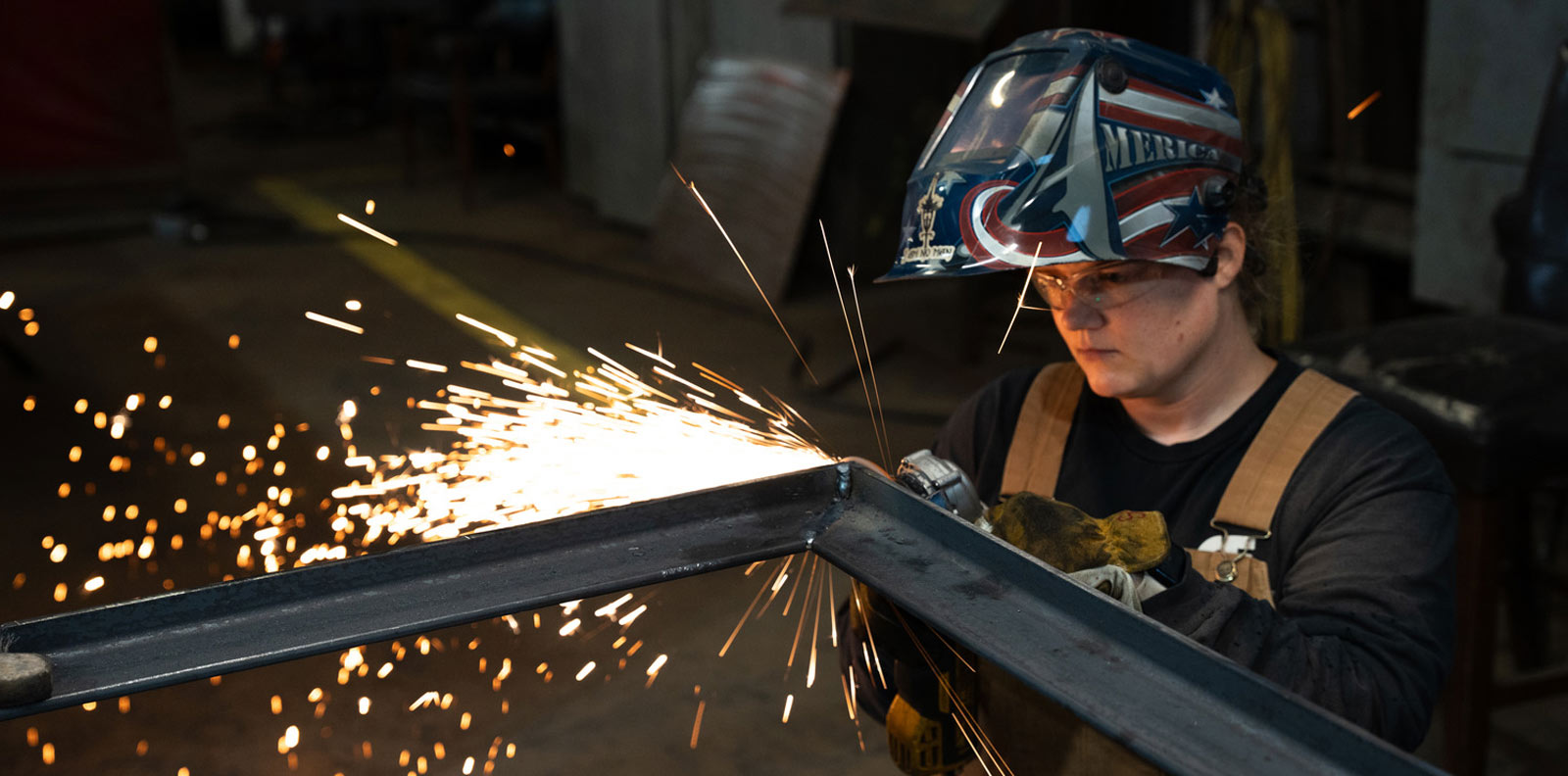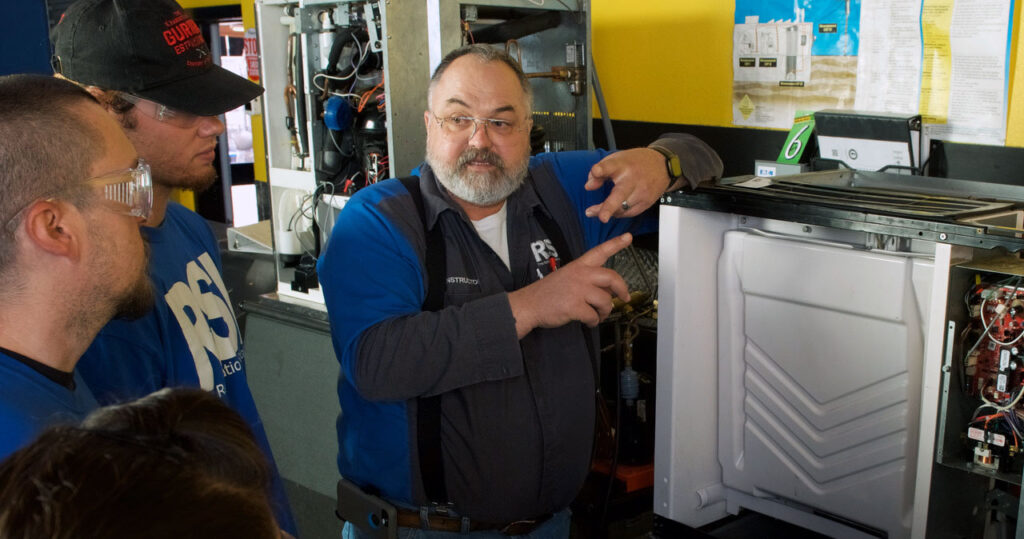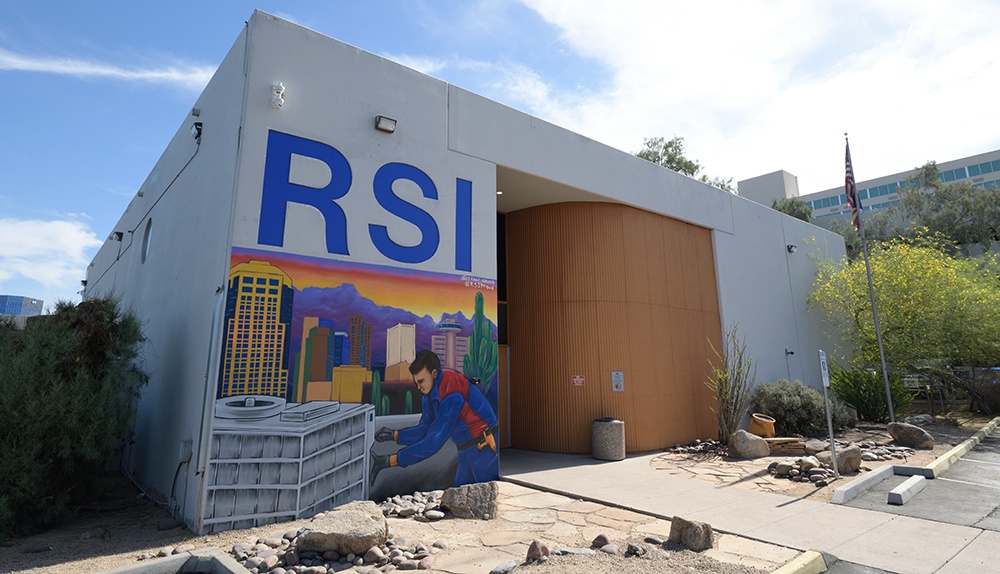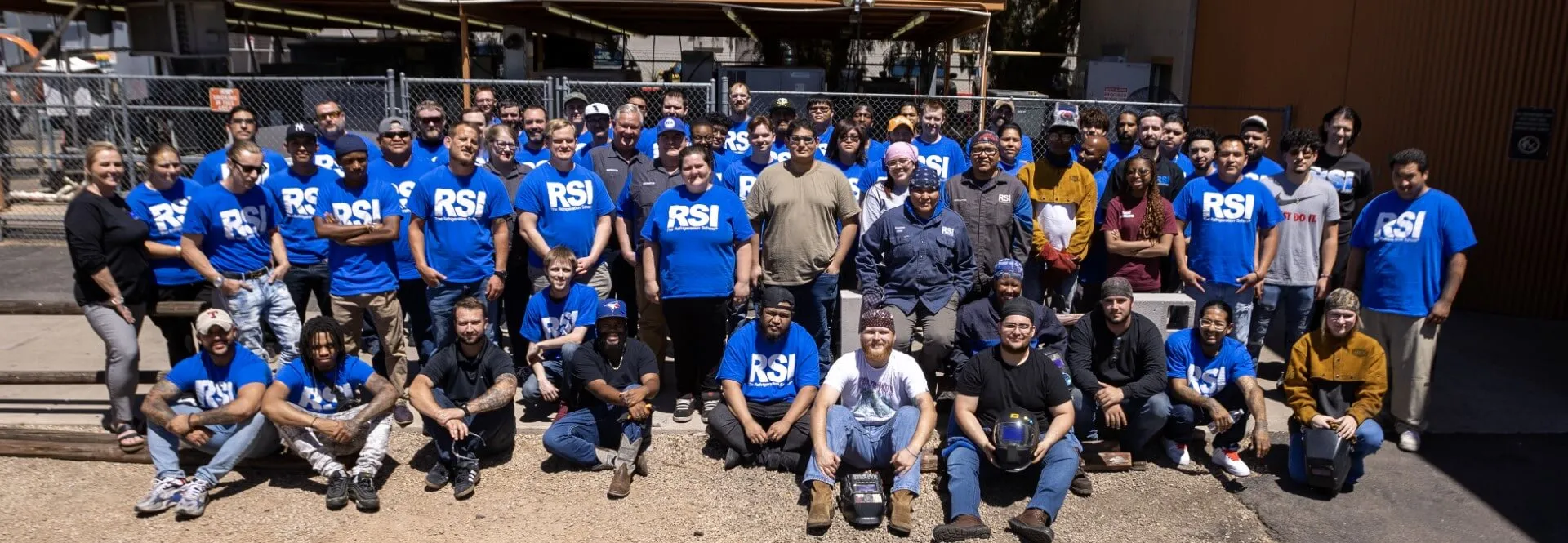RSI is a Great Training Option for Everyone
Learn more about how we can prepare you to advance your career.
If you’re learning Shielded Metal Arc Welding (SMAW) at The Refrigeration School (RSI), it’s important to understand welding certifications by position. Each certification shows you can weld from a certain angle and discipline. These positions match real job conditions you’ll see in the field. This article offers a list of SMAW welding certificates for different positions within the welding industry.
Types of SMAW Welding Certifications for Each Welding Position
Structural Welder Certification (AWS D1.1)1
Job Type: Building steel structures like bridges, buildings, or towers.
Job Description: Structural welders cut, bend, fit and weld steel parts used in buildings, bridges, and other metal frameworks. They read blueprints and welding symbols to place each weld in the correct location. Most of their work is done using SMAW in flat, horizontal, vertical, or overhead positions. After welding, they inspect joints for strength and fix any abnormalities. Safety is key, so they use protective gear when handling welding equipment.
Certification Test Description: This tests welders with steel plates in flat, horizontal, vertical,
and overhead positions (1G–4G).
Example: Welding I-beams during the construction of a parking garage.
Common Employers: Construction firms, steel fabrication shops.
Pipe Welder Certification (ASME Section IX or API 1104)2
Job Type: Welding high-pressure pipes for gas, oil, or steam systems.
Job Description: Pipe welders join metal pipes used for gas, water, steam, or oil systems. They read blueprints and follow welding procedures for high-pressure systems. Most pipe welds are done using SMAW in 5G or 6G positions, often on fixed pipes. They prepare pipe edges by cutting, beveling, bending and cleaning pipes before welding. After welding, they check for leaks or cracks using visual tests or X-rays. Pipe welders often work in tight places, so safety is important. They use tools like pipe clamps, grinders, and welding rigs on job sites or in plants.
Test Description: This test is completed on fixed pipes in 5G or 6G positions. 6G is often required.
Example: Welding a natural gas pipeline for an energy company.
Common Employers: Oil & gas, refineries, power plants.
Get Started on the Path to a New Career
Fill out our form to learn how we can help you change your life.
Boilermaker Certification (ASME Section IX)3
Job Type: Building or repairing boilers, tanks, and pressure vessels.
Job Description: Boilermakers build, install, and repair boilers, tanks, and pressure vessels. They cut and shape large steel plates using tools like torches, grinders, and welding machines. Many welds are done using SMAW, often on thick materials and in tight or awkward positions. Boilermakers inspect for cracks or weak spots and may use pressure tests to check for leaks. Work often takes place in factories, power plants, or refineries, sometimes in high heat or confined spaces.
Test Description: This test focuses on welding thick steel plates and pipe under pressure codes.
Example: Welding water tubes inside a large industrial boiler.
Common Employers: Shipyards, power stations, HVAC companies.
Shipyard Welder Certification (NAVSEA or AWS D1.1/D1.5)4
Job Type: Welding on naval or commercial ships.
Job Description: Shipyard welders build and repair ships by welding metal parts like hulls, decks, and bulkheads. They follow blueprints and welding procedures, often working in tight spaces or awkward positions. SMAW is commonly used, along with MIG or Flux-Core, depending on the job. They prep metal by grinding, cutting, bending and cleaning materials before welding. Their welds must be strong and pass inspections like visual checks, X-rays, or ultrasonic tests. Shipyard welders work in all weather, on dry docks, or inside ship interiors. Safety is critical due to the heavy materials and confined work areas.
Test Description: Often involves restricted access and tight quarters. Must pass visual and x-ray tests.
Example: Welding the hull of a cargo ship or submarine.
Common Employers: Defense contractors, shipbuilders.
Maintenance Welder Certification5
Job Type: Repairing broken parts on machinery, buildings, infrastructure or vehicles.
Job Description: Maintenance welders fix and rebuild metal parts on machines, tools, and structures. They work in factories, plants, farms, and repair shops. Duties include cutting, grinding, bending and welding broken or worn parts using SMAW and other welding methods. They read repair drawings or inspect damage and make a plan to fix the damage. Maintenance welders often weld in hard-to-reach spots and may need to work fast to keep equipment running. They use tools like torches, welders, clamps, and measuring tools. Safety is important since they often work around active machines or in high-heat areas.
Test Description: Often tested in 3G or 4G positions, but varies by job. May involve multiple metals.
Example: Repairing cracked steel on a factory conveyor frame.
Common Employers: Factories, farms, mining companies.
Railroad Welder Certification (DOT or AWS D15.1)6
Job Type: Welding on trains, railcars, or track systems.
Job Description: Railroad welders repair and join steel tracks, railcars, and other train system parts. They use SMAW and sometimes thermite welding to fix broken rails or build new track sections. Work is often done outdoors in all weather and may involve night or weekend shifts. Duties include grinding and cleaning joints, aligning rails, and performing strong welds that can handle heavy loads. They follow strict safety rules and inspection standards, especially on live tracks. Railroad welders use tools like rail saws, clamps, grinders, and portable welders, often working in remote or rough terrain.Test Description: May require both SMAW and thermite welding. Often includes structural weld tests.
Example: Welding a broken rail section in the field.
Common Employers: Freight and passenger rail companies.
Military or Aerospace Welder Certification (MIL-STD or AWS D17.1)7
Job Type: Working on aircraft, rockets, or military equipment.
Job Description: Military and aerospace welders work on aircraft, spacecraft, and defense equipment that require precise, high-strength welds. They use SMAW and other methods to join thin or specialized metals like aluminum, titanium, or stainless steel. Welds must pass visual, X-ray, or ultrasonic tests. These welders often work in clean environments under tight quality controls. Tools include precision welders, microscopes, and measuring devices. Attention to detail and following safety rules are critical in this job.Test Description: Highly precise welding is tested. The test may involve thin materials and must pass visual, x-ray, and bend tests.
Example: Welding parts on an aircraft landing gear assembly.
Common Employers: Defense contractors, aerospace companies.
Want To Learn More?
If you are ready to prepare for one of the SMAW welding certifications for different positions, RSI’s Welding Specialist program is ready to get you started. We offer hands-on training with classroom lectures to prepare you for entry-level structural, alloy, and pipeline welding job opportunities. To learn more, contact us.
Compliance
- https://www.aws.org/certification-and-education/professional-certification/cwi-and-scwi-endorsements/d11-endorsement/
- https://www.aws.org/certification-and-education/professional-certification/cwi-and-scwi-endorsements/api-1104-endorsement/
- https://www.asme.org/learning-development/find-course/asme-bpv-code-section-ix-welding-brazing-fusing-qualifications-(1)/online
- https://www.aws.org/certification-and-education/professional-certification/cwi-and-scwi-endorsements/d11-endorsement/
- https://www.aws.org/certification-and-education/professional-certification/
- https://www.aws.org/certification-and-education/professional-certification/cwi-and-scwi-endorsements/d151-endorsement/
- https://www.aws.org/certification-and-education/professional-certification/cwi-and-scwi-endorsements/d171-endorsement/
